Comprar un cajero automático es una decisión empresarial, no la compra de un simple aparato. Usa estas preguntas y respuestas para elegir el lugar adecuado para comprarlo, comparar modelos y características, y realizar una breve lista de verificación previa a la compra.
¿Dónde comprar cajeros automáticos?
Compre a un especialista con instalación, repuestos y soporte técnico reales. ATMTrader ofrece la venta de cajeros automáticos respaldados por los más de 30 años de experiencia de NationalLink en el sector, lo que le garantiza hardware probado, técnicos reales y un servicio a largo plazo.
¿Cuánto cuesta comprar un cajero automático?
La mayoría de los nuevos comercios minoristas Los cajeros automáticos en venta cuestan aproximadamente entre 2295 y 3500 dólares , más complementos opcionales como un módem inalámbrico, una cubierta superior o letreros. Calcule un presupuesto aparte para la instalación, el envío y el papel.
¿Es rentable comprar un cajero automático?
Sí, en el lugar adecuado. Los recargos típicos son de entre 2,50 y 4,00 dólares por retiro. Una sola unidad bien ubicada puede generar unos cientos de dólares al mes , dependiendo del tráfico y las horas. Para obtener información detallada, consulte nuestro blog "Ser propietario de un cajero automático: lo que debe saber" para conocer el retorno de la inversión y los aspectos legales básicos. Si está pensando en comprar un cajero automático , el blog también explica cómo calcular el retorno de la inversión.
¿Puedo comprar un cajero automático usado?
Puede hacerlo, pero verifique el cumplimiento y el soporte técnico. Confirme el cumplimiento de las normas EMV/PCI , la disponibilidad de piezas y la compatibilidad del procesador. Si compra un cajero automático usado, prevea la necesidad de piezas reacondicionadas y reparaciones de una fuente confiable.
¿Se puede poner un cajero automático en cualquier sitio?
No. Necesita el permiso del propietario y un acuerdo de colocación firmado . Los buenos emplazamientos tienen mucho tráfico peatonal, horarios nocturnos, una ubicación segura y visible, y una participación justa en los ingresos. Para obtener más consejos sobre la colocación, visite nuestro blog "Coloque el cajero automático donde genere ganancias", una guía útil para cualquiera que esté buscando cajeros automáticos en venta .
¿Cuánto dinero necesito para iniciar un negocio de cajeros automáticos?
Planifique la máquina , la instalación/el envío y un fondo de caja (normalmente entre 2.000 y 5.000 dólares por unidad para empezar). Su fondo de caja exacto dependerá de los retiros y la frecuencia de recarga. Antes de comprar un cajero automático , tenga en cuenta las necesidades de efectivo y los ciclos de reposición.
¿Cómo instalar un cajero automático privado?
La mayoría de las instalaciones en interiores necesitan una toma de corriente estándar , internet (Ethernet, Wi-Fi o celular), anclaje al suelo y una transacción de prueba . Manténgalo visible, bien iluminado y a la vista de la cámara. Para obtener más información sobre la instalación de la máquina, consulte nuestra guía de configuración y administración de cajeros automáticos en nuestro blog .
¿Qué potencia necesita un cajero automático?
Para la mayoría de los locales minoristas, una toma de corriente estándar está bien. Confirme los detalles según el modelo y el código de construcción, especialmente para las unidades exteriores o que atraviesan la pared. Consulte nuestra sección " ¿Qué cajero automático es el adecuado para su negocio?" para conocer los detalles de cada modelo.
Lista rápida de verificación para el comprador
- Ubicación adecuada: horario, afluencia de público, aprobación del propietario, línea de visión despejada.
- Modelo elegido para su espacio y caso de uso. Vaya a ¿Cuál cajero automático es el adecuado para su negocio ?
- Características incluidas: EMV, ADA, caja fuerte de seguridad, monitorización remota, opción inalámbrica, señalización. Haga clic en "Comprendiendo las partes de un cajero automático" antes de comprar un cajero automático .
- Plan de instalación: atornillar, conectar la alimentación, la conectividad y probar las transacciones. Consulte la Guía de configuración y administración del cajero automático .
- Operaciones listas: procesador, plan de carga de efectivo, monitorización del tiempo de actividad, contacto de servicio. Verifique la orden de trabajo de servicio a nivel nacional .



